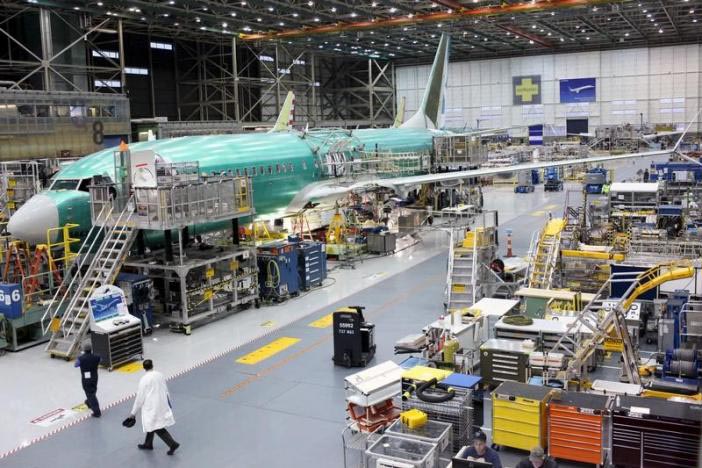US factory activity cools slightly; trend remains bullish
WASHINGTON: A measure of US manufacturing activity retreated from a 2-1/2-year high in March amid a decline in production and an inventory drawdown, but a surge in factory jobs indicated that the sector's energy-led recovery was gaining momentum.
Other data on Monday showed construction spending rising to a near 11-year high in February, lifted by a jump in home building investment. The reports pointed to strong fundamentals despite signs of weak economic growth in the first quarter.
"The US economic expansion remains on solid footing even taking into a account what is likely to be a pretty lackluster first-quarter growth profile," said Tom Porcelli, chief US economist at RBC Markets in New York.
The Institute for Supply Management (ISM) said its index of national factory activity fell to a reading of 57.2 last month from 57.7 in February, which was the highest since August 2014.
A reading above 50 indicates an expansion in manufacturing, which accounts for about 12 percent of the US economy.
Seventeen of the 18 manufacturing industries reported growth and no industry reported a contraction. Comments from factories were mostly upbeat, with machinery manufacturers saying that business was up 10 percent to 15 percent.
Transport equipment manufacturers, however, described the industry's outlook as "relatively flat." The manufacturing recovery is being driven by the energy sector as steady increases in crude oil prices boost drilling activity.
A report from energy services firm Baker Hughes on Friday showed US drillers added 137 rigs in the first quarter, the most since the second quarter of 2011. That has fueled demand for machinery, resulting in business spending on equipment rising in the fourth quarter for the first time in a year.
Manufacturing is also benefiting from a surge in business sentiment following President Donald Trump's pledge to pursue business-friendly policies, including cutting corporate taxes and deregulation.
But after last month's failed attempt by Republicans in the US House of Representatives to repeal the Obama administration's 2010 healthcare law, economists warn that Trump might struggle to implement his agenda.
The dollar rose to a two-week high against a basket of currencies, while US stocks fell after New York and other states challenged the Trump administration on grounds of illegally blocking energy efficiency standards. US Treasuries rose.
HIRING PROSPECTS BRIGHTEN
Last month, the ISM survey's production sub-index decreased 5.3 percentage points to 57.6. A gauge of manufacturing inventories contracted. While that weighed on the ISM index, it bodes well for future manufacturing activity.
Though a measure of new orders fell last month, it remained near a more than three-year high. A gauge of factory employment jumped to its highest reading since June 2011. That would suggest another strong month of factory job gains in March.
But sentiment indicators such as the ISM have been painting a more robust picture than the so-called hard data, which has suggested that the economy grew around a 1 percent annualized rate in the first quarter. Gross domestic product increased at a 2.1 percent pace in the fourth quarter.
"If manufacturers hire as many workers as the survey says they are planning to do, the nonfarm payroll jobs number on Friday could be a blowout," said Chris Rupkey, chief economist at MUFG Union Bank in New York.
Manufacturers reported paying more for raw materials, further evidence that inflation pressures are building up. A report on Friday showed a key consumer inflation measure in February recorded its biggest annual gain in nearly five years.
The ISM's prices index rose 2.5 percentage points in February to 70.5, the highest reading since May 2011, indicating higher raw materials prices for the 13th straight month.
A separate report from the Commerce Department on Monday showed construction spending increased 0.8 percent to $1.19 trillion in February, the highest level since April 2006, after dropping 0.4 percent in January.
Construction spending was boosted by outlays on private residential construction, which surged 1.8 percent to the highest level since July 2007. Spending on private nonresidential structures fell 0.3 percent.
"The trend in nonresidential construction spending has softened lately," said Daniel Silver, an economist at JPMorgan in New York. "Despite this weakening in the data, we still look for a strong increase in overall private nonresidential investment in the first quarter because of large gains in separate data related to activity in the energy sector."






